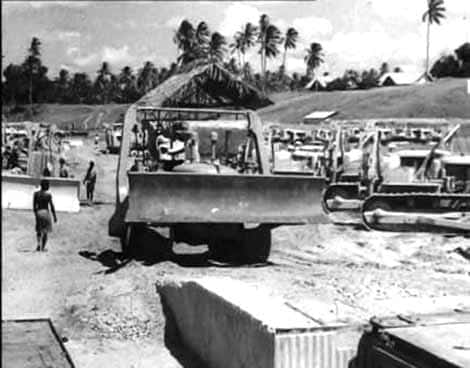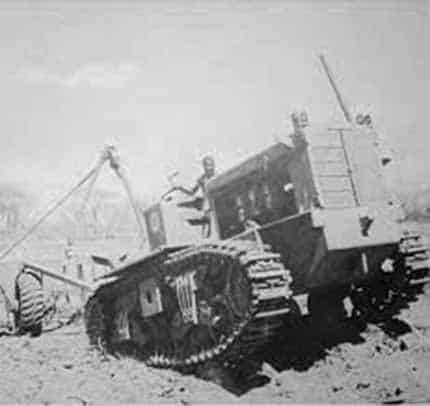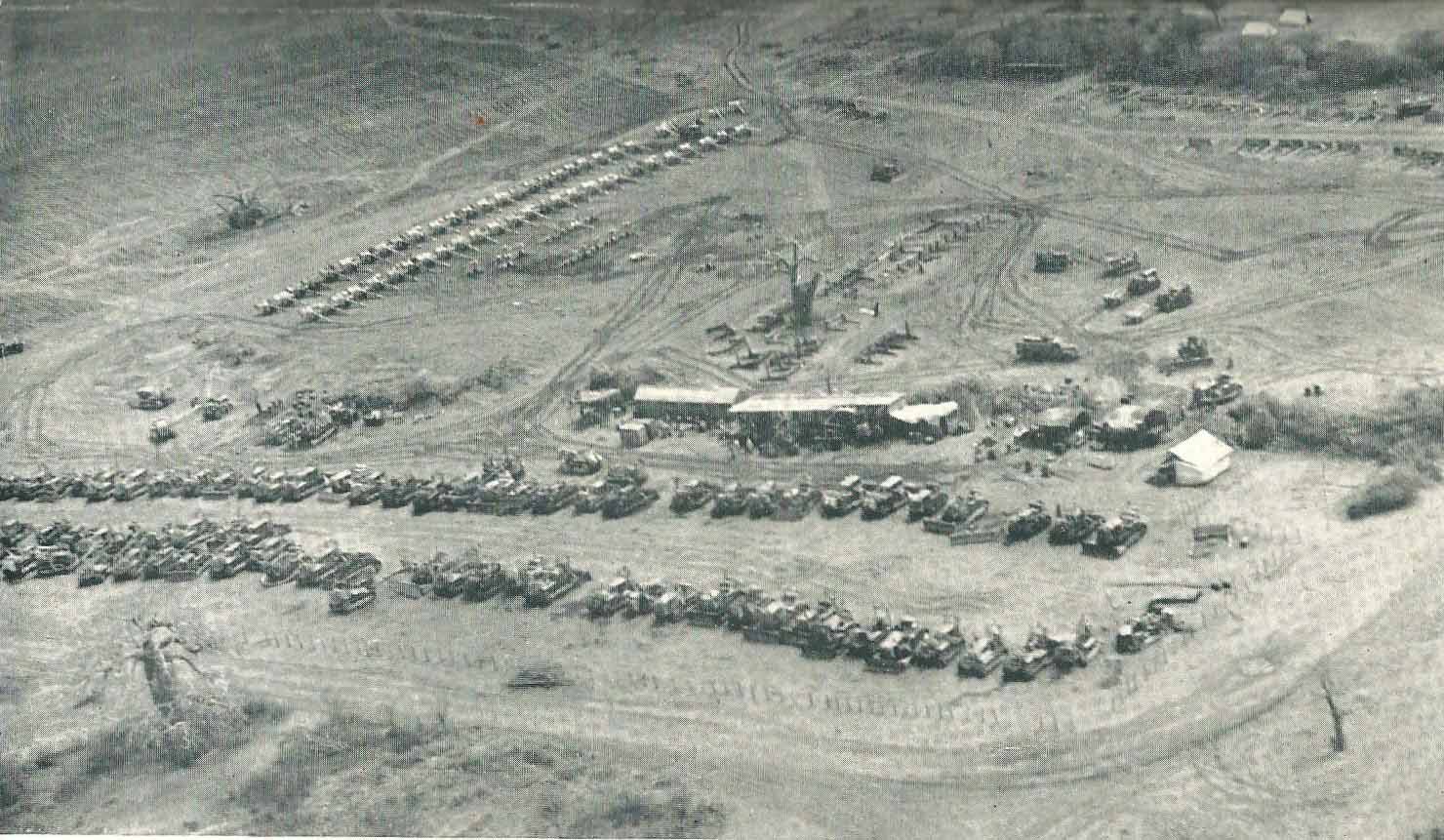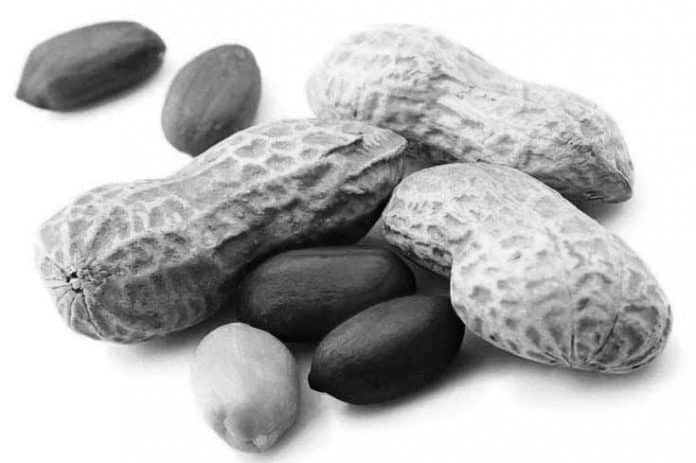Tanganyika Groundnut Scheme – The Biggest Failure of the Century!
The project famously known as Tanganyika Groundnut Scheme, also called the East African Groundnut Scheme, was an unsuccessful investment venture by the British government to grow groundnuts on the vast land of its African colony of Tanganyika (now known as Tanzania). The initiative was launched after World War II under the auspices of the Labor Party of Prime Minister Clement Attlee, with the aim of producing much-needed oil seeds from about 3 million acres of

land (5,000 square miles, or over 1 million hectares), to boost margarine related products manufacturing in the UK and to develop the abandoned areas of the British Empire. Despite great efforts and at a cost of £ 36 million (equivalent to more than £ 1 billion worth of money as of year 2020), the project failed miserably and was eventually abandoned because it could not be implemented in 1951.
Proponents of the Groundnut scheme which John Stratchey, the Minister of Food then was part of it, disregarded all the earlier redflags about rainfall conditions and environment being unsuitable for the project. The management, that was mainly from United Africa Company as a Managing Agency and later the state-run Overseas Food Corporation, was horrendous, and the plan seemed to be a clear sign of the government’s weakness and unsuccessful efforts at the end of colonial Africa. The plan was described in 1953 as “the worst investment loss in recent history of British colonialism.”
Background
In the post-World War II era, Britain was heavily indebted to the United States, facing what John Maynard Keynes called “financial surrender”, and the Labor government sought ways to expand its empire to reduce its financial dependence to the United States. The increase in the cultivation of food crops in the colonial areas, both for domestic use and for export, was a major part of this strategy. In addition, the new Labor party government backed Fabian’s view of colonial intervention that encouraged the government’s role in the manufacture of basic goods and expanded social benefits for the colonial population. The Tanganyika plan represents part of the “second colonial rule” within the British Empire, which had the characteristics of economic control and technological expertise.
In 1946, Frank Samuel, head of the United Africa Company, came up with the idea of the Groundnut scheme in Tanganyika, a British colonial region under the supervision of the United Nations (UN) Trusteeship, for edible oil production. Britain remained under World War II rationing and was short of cooking oil, and margarine products. He presented the idea to John Strachey, the Minister of Food, and in April 1946, the British government approved a delegation to visit suitable sites, led by John Wakefield, former Director of Agriculture in Tanganyika. From this perspective, it can be concluded in history books that the Tanganyika Groundnut Scheme Date was year 1946.
After three months of work, the team’s report in September 1946 showed that the Groundnut Scheme was going to be a feasible program and hence recommended the cultivation of 3.21 million acres of groundnuts by 1952. The Cabinet approved the proposal in January 1947, and began transporting workers and machinery to Tanganyika. Officers began recruiting people for the “Groundnut Scheme Army” and about 100,000 former soldiers volunteered to fill in 1,200 jobs.
Cultivation
The first group set up camp in Kongwa, not far from Dodoma (now the capital of Tanzania), and inspected the area. They saw it fit for Groundnut Scheme despite the large amount of clay and water scarcity, and in the end did set up the program headquarters there. Gradually the whole city was established, known to the natives as ‘Half London’, as half of London’s population seemed to dominate the city for a time.

Finding the right equipment needed to clean up the land for agriculture, seemed difficult. Eventually, the Groundnut Scheme project managers obtained suitable tractors and bulldozers from Canada and purchased additional U.S. Army tractors from the Philippines, although many of them seemed too old to use because they were very rusty. These had to be transported through the Port of Dar es Salaam, which was extremely congested, to the inner side of the country using the only available transport, a one-way railway with steam locomotives. Unexpected flood that raised the water of Kinyansungwe River led to a massive destruction of the railway line, as a result only a dirt unpaved road remained as the only option for transportation.
This delayed the arrival of the bulldozers needed for land clearing until April 1947.
At the time, the bush turned out to be more difficult to remove than the planners had foreseen. In addition to the natural dangers of the wildlife of the area (workers often had to deal with angry wild animals such as elephants and rhinos), encountered large baobab trees that were difficult to remove, the task was even more difficult when it was found out that one of the baobabs was a local tribal prison, another was a place of ancestor worshipping, and many had beehives in their holes. Several workers were hospitalized due to severe bee stings.
But what was most affected were heavy work machines. By the end of the summer of 1947, two-thirds of tractors imported into the country had become unusable. Spoons of bulldozers that were used to take root in the ground were destroyed in just few days. With the intention of

“doing”, the Groundnut Scheme management bought an additional Sherman tank and used the Vickers engineering company to remove its front weapon and put a spoon in the front instead, creating what came to be known as “Shervicks” – but these efforts also failed when it met African bushes one on one. Finally, in the forested Southern Hemisphere, they discovered that a long chain connected between two bulldozers would topple all the trees in the middle, if a third bulldozer was used to uproot any trees remaining and free up the chain. The first import of a suitable ship’s anchor chain from London was rejected by London’s managers because they thought it was a joke.
In September 1947, African workers joined a three-day national strike; the situation that made expatriates very unhappy as they had to make meals for themselves. A large number of Africans at that time were employed as tractor drivers and, after making mistakes in the beginning, they later gained skills in the profession.
With great difficulty, the Tanganyika Groundnut Scheme Army was finally able to plant the first nuts. When the rains came, some garages and warehouses were flooded. After that, the hot season made the soil very hard, which made harvesting close to impossible.
Take Over of the Management and Construction of the Railway
In February 1948, United Africa Company transferred the project to the new Overseas Food Corporation (OFC). It sent a new manager, Major General Desmond Harrison, to the area. He found the program in a state of disarray, and immediately tried to promote military discipline, which did not made him popular to the staff, situation that forced him to always hide in his tent and just focus on reviewing various reports with a hope to prevent the uncontrollable cost overruns. At the end of the year he was ordered to return home for sick leave.

In 1949, the Kongwa region experienced a severe drought, which severely reduced crop yields. After two years, only 2,000 tons of groundnuts were harvested, less than the amount planted as seeds, and alternative attempts to plant sunflowers instead were also unsuccessful as they were more affected by drought.
As a result, program managers began to shift their focus to more fertile areas in western and southern Tanganyika, but progress there was being very slow. In the south, not only was a completely new railway needed, but a deep water port had to be built from scratch in Mtwara. The Southern Province Railway was first built to transport the produce, but it never transported the produce and was later canceled.
The actual target of 3 million acres was brought down to 150,000 acres (607 km²) and then to 50,000 acres (202 km²). In the end only 47,000 acres were cleared.
At the end of 1949, the program was met with strong criticism from Parliament and the press. The Labor government tried to cling to it, but suffered because of it during the 1950 election and even more so when they lost the 1951 (UK) general election. Earlier, in January 1951, when the project was finally suspended, the Treasury canceled a total of £ 36.5 million – equivalent to more than £ 1 billion as of year 2020. Mechanical production was halted, and the cleared land was handed over to African farmers, who took a better and successful approach of growing tobacco, cashew nuts and livestock feed instead.
Cultural References
When year 1950 was about to finish, The Happiest Days of Your Life, a British comedy film including header teachers Muriel Whitchurch (Margaret Rutherford) and Wetherby Pond (Alastair Sim), there was a conversation about what British Empire corner could they run to, and one mentioned having a brother who “grows groundnuts in Tanganyika”.
The British Children‘s Magazine called “Eagle” which was dated September 29, 1950, in the Dan Dare region, ‘regenerated’ the front page of the” Daily World Post “dated 28 September 1995. The main issue is the lack of information from Dan Dare about his journey to Venus. The sub-theme was EASTERN AFRICAN SUCCESS – PEACE ARRIVES IN LONDON: “There was a touching ceremony in London yesterday when whole grains were handed over to the Minister of Food and a delegation represented by indigenous peoples from the groundnut scheme farming area and survivors of Strachey’s scheme”.
In Noël Coward’s song about the British Festival (1950), there is a song: “We must all salute / Those who have crossed us twice / Fire a round / For every pound / Groundnuts have cost us”.
In James Bond’s 1960 short story “Quantum of Solace“, the governor of The Bahamas tells Bond the story of a public servant named Philip Masters who, after a miserable life, found himself “turned off to the groundnut scheme.”
BBC news television program had studio audience on the airing of the show “Beatles’ Magical Mystery Tour, whereby one of the member of the audience shared his thought about the film as following “the biggest waste of money since the Tanganyika Groundnut Scheme.”
Author and comedian Spike Milligan described the Concorde project as a “flying Tanganyika groundnut scheme” in a cartoon prepared for the critically acclaimed Private Eye magazine.
In the 1970’s British sitcom Steptoe and Son, Harold explained to his ex-girlfriend that her late husband was a “very good Tory man, always mocking Clem Attlee and the Tanganyika Groundnut Scheme”.
For more articles about Tanganyika click here!
































